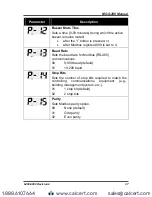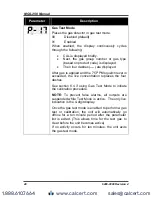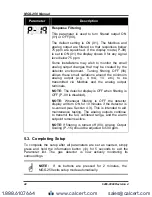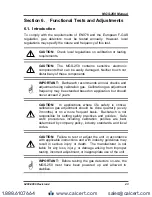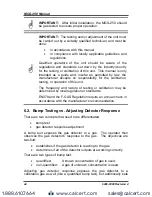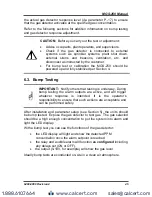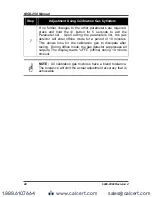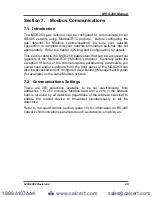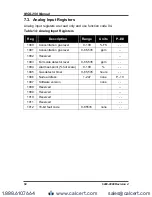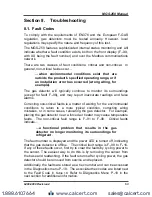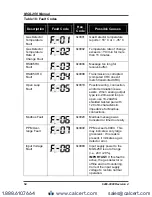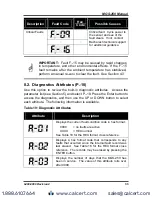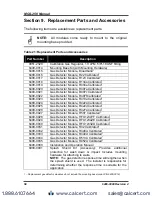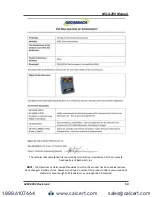
MGS-250 Manual
6490-9000 Revision 4
45
the actual gas detector response level (via parameter P.-17) to ensure
that the gas detector activates at the specified gas concentration.
Refer to the following sections for addition information on bump testing
and gas detector response adjustment.
CAUTION:
Before you carry out the test or adjustment:
x
Advise occupants, plant operators, and supervisors.
x
Check if the gas detector is connected to external
systems such as sprinkler systems, plant shut down,
external sirens and beacons, ventilation, etc. and
disconnect as instructed by the customer.
x
For bump test or calibration the MGS-250 should be
powered up and fully stabilized per Section 4.
6.3. Bump Testing
IMPORTANT:
Notify others that testing is underway. During
bump testing the alarm outputs are active, and will trigger
whatever response is intended. It is the operator’s
responsibility to ensure that such actions are acceptable and
can be performed safely.
After installation and parameter setup (see Section 5), the units should
be bump tested. Expose the gas detector to test gas. The gas selected
should be a high enough concentration to put the system into alarm and
light the LED display.
With a bump test you can see the functions of the gas detector:
x
the LED display will light and show the detected PPM
concentration once the alarm setpoint is reached
x
the relay and audible alarm will function
as configured
including
any delays set (ON or OFF).
x
the output (0-10V, for example) will show the gas level
Ideally bump tests are conducted on-site in a clean air atmosphere.
www.calcert.com
sales@calcert.com
1.888.610.7664
0
5
10
15
20
25
30







